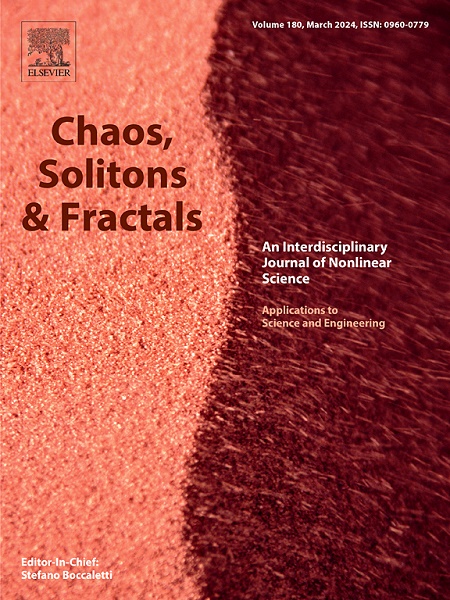Kolmogorov–Arnold networks with gumbel softmax for recovering network structure and forecasting complex systems
IF 5.6
1区 数学
Q1 MATHEMATICS, INTERDISCIPLINARY APPLICATIONS
引用次数: 0
Abstract
Reconstructing network connections and dynamics simultaneously is essential for understanding complex systems and developing appropriate strategies. Graph neural networks (GNNs) and Transformers are frequently employed to model dynamics. These models depend on MultiLayer Perceptrons (MLPs) with linear weights and predetermined activation functions to integrate information, which somewhat limits their expressive capability. Additionally, the inferred structure may be inaccurate, as the dynamics and correlations within the complex system are interdependent. As a result, its forecasting ability may be limited. To enhance fitting accuracy of both structure and dynamics, we introduce the Kolmogorov–Arnold Networks (KANs) and Gumbel-softmax technique for modeling continuous and discrete dynamics via spline-parameterized univariate functions and explicit network structure, respectively. Experiments conducted on both simulated data and a real dataset demonstrate that two novel approaches, GGNKAN and more efficient GKAN, can effectively capture the complex and nonlinear functions of the nodes and their interactions, outperforming the Gumbel Graph Networks (GGNs), the state-of-the-art method, in terms of interactions recovery and/or prediction error.
用于网络结构恢复和复杂系统预测的gumbel softmax Kolmogorov-Arnold网络
同时重建网络连接和动态是理解复杂系统和制定适当策略的必要条件。图神经网络(gnn)和变压器(transformer)是常用的动态建模方法。这些模型依赖于具有线性权重和预定激活函数的多层感知器(mlp)来整合信息,这在一定程度上限制了它们的表达能力。此外,推断出的结构可能是不准确的,因为复杂系统中的动力学和相关性是相互依赖的。因此,其预测能力可能有限。为了提高结构和动力学的拟合精度,我们引入了Kolmogorov-Arnold网络(KANs)和Gumbel-softmax技术,分别通过样条参数化单变量函数和显式网络结构对连续和离散动力学进行建模。在模拟数据和真实数据集上进行的实验表明,GGNKAN和更高效的GKAN两种新方法可以有效地捕获节点及其相互作用的复杂和非线性函数,在相互作用恢复和/或预测误差方面优于最先进的Gumbel图网络(ggn)。
本文章由计算机程序翻译,如有差异,请以英文原文为准。
求助全文
约1分钟内获得全文
求助全文
来源期刊

Chaos Solitons & Fractals
物理-数学跨学科应用
CiteScore
13.20
自引率
10.30%
发文量
1087
审稿时长
9 months
期刊介绍:
Chaos, Solitons & Fractals strives to establish itself as a premier journal in the interdisciplinary realm of Nonlinear Science, Non-equilibrium, and Complex Phenomena. It welcomes submissions covering a broad spectrum of topics within this field, including dynamics, non-equilibrium processes in physics, chemistry, and geophysics, complex matter and networks, mathematical models, computational biology, applications to quantum and mesoscopic phenomena, fluctuations and random processes, self-organization, and social phenomena.
 求助内容:
求助内容: 应助结果提醒方式:
应助结果提醒方式:


